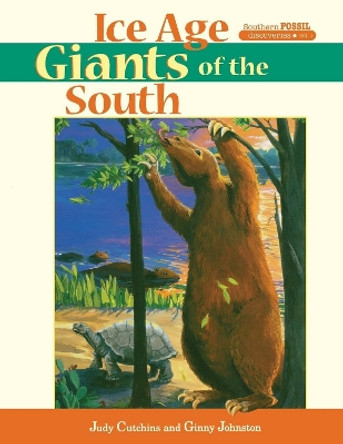The mammoth, with its shaggy coat, enormous tusks, and ponderous presence, is one of the great icons of extinction. It is also one of the few prehistoric creatures that is known not only from a few scattered fossilized bones, but from specimens that have been preserved perfectly, with skin, flesh and hair. Complete mammoths lie frozen in the icy wastes of Siberia, and from time to time one is exposed as the temperature or conditions change. So while there is doubt about when most prehistoric animals first appeared on earth, we know precisely when and where the mammoth lived. Not only are there excellent specimens, we also have pictures of mammoths painted by people who actually saw them alive - our ancestors who, thousands of years ago, decorated the walls of caves with the animal's image. Today, this artistic tradition continues and many modern painters have chosen to create pictures showing the mammoth as it appeared in life. Its lumbering form is often shown crossing great ice fields or snowbound plateaus. The Mammoth is one of the great icons of prehistory. The name conjures up an immediate picture of a huge, shaggy, reddish, elephant-like creature trudging across a vast icy waste, its enormous curved tusks reflecting in their whiteness the snows lying all around. The word mammoth is now so familiar that it has come to mean not just an extinct elephant but anything that is immense, formidably large or outsized. The mammoth has entered popular culture in a way that few animals have. And, curiously, we know more about them than we do about most prehistoric beasts. The majority of these are identified only from fossil bones, yet modern man has found whole frozen mammoths, completely preserved for centuries, in the ice of Siberia. We also have cave paintings, drawn by our ancestors, which show us exactly what mammoths looked like in life. These are among the earliest images produced by the hand of man. Yet the mammoth remains mysteriously elusive. The idea of an elephant living in arctic conditions seems to us a strange one. After all, today's elephants are essentially creatures of the tropics. Why did they die out, perhaps as recently as four or five thousand years ago--just as man was beginning his rise to true civilization? This book tells the story of the mammoth and its interaction with man--both in prehistory and today. Errol Fuller is the author of
The Great Auk: The Extinction of the Original Penguin, and
The Dodo: Extinction in Paradise.
About the AuthorErrol Fuller is a writer, painter, and ornithologist whose previous books include The Lost Birds of Paradise and The Great Auk, The Extinction of the Original Penguin.
Book InformationISBN 9781593730185
Author Errol FullerFormat Hardback
Page Count 48
Imprint Bunker Hill Publishing IncPublisher Bunker Hill Publishing Inc
Weight(grams) 186g









